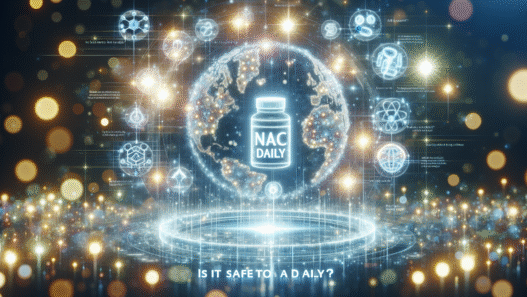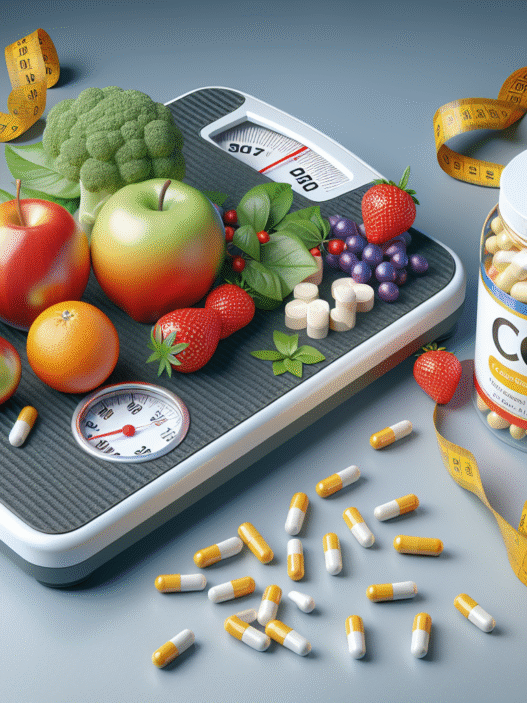CoQ10 and Aging
Coenzyme Q10 (CoQ10) is one of those molecules your body cranks out that keeps the lights on, literally fueling energy while also acting as an antioxidant. Let’s chat about what happens to CoQ10 as we get older, and why you might wanna keep it in check for aging gracefully.
CoQ10 Levels and Aging
So, as you rack up those birthday candles, your CoQ10 levels tend to slide downhill. This isn’t just a minor inconvenience—when CoQ10 dips, it could mess with how your cells churn out energy. CoQ10 hangs out in the mitochondria, those little power plants in your cells, helping along a vital process known as the electron-transport chain. If you’re dealing with heart problems or popping statin meds for cholesterol, you’re more likely to be running on CoQ10 fumes (Mayo Clinic).
Check out this handy-dandy table showing CoQ10 levels across different ages:
| Age Group | Average CoQ10 Levels (mcg/ml) |
|---|---|
| 20-30 years | 1,200 |
| 30-40 years | 1,000 |
| 40-50 years | 800 |
| 50-60 years | 600 |
| 60+ years | 400 |
Importance of CoQ10 Supplementation
Thinking about topping up on CoQ10? It could be a smart move, especially if the old energy tank feels empty or you’ve hit some health speed bumps. Supplementing CoQ10 might give you an energy boost and also works double duty, scavenging harmful free radicals that want to wreak havoc inside your cells (PubMed Central).
People have gone a bit bananas over CoQ10 thanks to its perks outside basic energy. It could help out with heart health, neurological conditions like Parkinson’s or Alzheimer’s, and even diabetes (PubMed Central). Pairing CoQ10 with healthy lifestyle choices might just be your golden ticket to feeling good. Curious about how to integrate CoQ10 into your routine? Check out our article on should you take coq10 in the morning or at night?.
Factors Affecting CoQ10 Prices
Let’s take a look at what makes CoQ10 supplements pricey and what’s driving their cost. It’s more than just a few high numbers on a label—it’s about market waves and local quirks shaking things up.
Global Market Trends
CoQ10’s global marketplace is on quite an upswing, with predictions that it’ll hit nearly $1.5 billion by 2032, bouncing up from about $679 million today (IMARC Group). As folks lean toward CoQ10 for its health perks, costs to make and get them to you might kick up, too.
Things are a bit like riding a rollercoaster, though. Across the pond in North America, a bump in 2024 hit the brakes, with fewer folks buying, workers taking to the picket lines, and ports tying up shipments. This all played a part in nudging prices down for a bit and shaking up how steady everything seemed (IMARC Group).
| Global CoQ10 Market Growth | 2023 | 2032 | CAGR (%) |
|---|---|---|---|
| Market Size (Million USD) | 679.4 | 1483.7 | 9.10 |
Regional Influences on CoQ10 Prices
Then, there’s the local scene to think about. Over in Asia Pacific, they’ve had their hands full dealing with less supply, shipping snags, and everyone scrambling to get their hands on CoQ10. These hurdles pumped up the purchase volumes and naturally, the costs you see (IMARC Group).
With all these moving parts, you might pay different prices depending on where you are. The way CoQ10 gets produced and how much is available can make costs swing from one place to another.
| Region | Market Trends | Impact on Prices |
|---|---|---|
| North America | High stocks, demand bend | Prices fall |
| Asia Pacific | Short supply, demand surge | Price hikes |
So when you’re eyeing those CoQ10 prices, know there’s a story behind it. If you’re curious about what CoQ10 might do for you, take a gander at topics like what is CoQ10 recommended for? and does CoQ10 help with weight loss?.
Synthesis and Benefits of CoQ10
Let’s chat about CoQ10, a tiny powerhouse that’s got big plans, especially for folks aged 35 to 65 concerned about aging and weight loss. The rising buzz around CoQ10 means it also comes with a pretty penny, thanks to how it’s made and how much it’s wanted.
CoQ10 Synthesis Process
CoQ10 doesn’t just appear out of nowhere; the body goes through some nifty chemistry tricks to make it happen. It starts with a benzoquinone ring hugging onto an isoprenoid chain. Naturally, this molecule pops up in our bodies, but for those who want a little extra, there are a few ways to make it:
- Chemical Mixing: This is a high-level science party with lots of complicated reactions.
- Half-and-Half Methods: Mix a bit of the real stuff with the lab stuff.
- Nature’s Helpers: Let tiny life forms like microbes handle the job. Growing in use, it’s seen as a cleaner, greener method.
As people shout out the perks of CoQ10, its popularity in the market skyrockets, which inevitably makes it a bit pricier and harder to snag.
Health Benefits of CoQ10
CoQ10 is like the MVP in your cells, doing its best to keep your energy levels up and ward off pesky oxidants. Here’s what it’s doing for you:
- Power-Up: Think of CoQ10 as the battery charger for your cells’ mitochondria, which might just give your energy a nudge, especially when you’re feeling wiped out by stress.
- Anti-Rust Shield: It’s like a bodyguard, stopping free radicals from attacking your cells.
- Helping Hand for Health Woes: Folks have found CoQ10 to work wonders with:
- Heart issues, like cardiomyopathy
- Brain bits, helping conditions like Parkinson’s and Alzheimer’s
- Balancing blood sugar in diabetes
All these perks make CoQ10 a darling for those keen on staying healthy as the years roll by. Curious for more deets? Hop over to our guide on what is CoQ10 recommended for?.
| What It Does | How It Helps |
|---|---|
| Power-Up Your Cells | Boosts ATP for better energy |
| Nice-to-Have Antioxidant | Keeps your cells squeaky clean from radicals |
| Health Buddy | Supports conditions like heart and brain disorders |
CoQ10 is a cellular superstar, and its prime role in energy and health explains why it commands its price. It’s a gem for adults who want to amp up their health game.
The Cost of CoQ10 Supplements
Getting why CoQ10 supplements cost what they do involves a peek into how they’re made and the hiccups in price tags you might find on the shelves.
Production Methods Impacting Cost
How CoQ10 is made throws a big ol’ wrench in its price tag. It’s a choice between yanking it out of living stuff or whipping it up in a lab through fermentation. If it’s extracted from living tissues, brace yourself—it’s pricey, thanks to the intricate steps needed. Meanwhile, lab-grown CoQ10 is easier on the wallet and consistent in quality (NCBI).
Recently, new tricks in CoQ10 manufacturing mean savings galore. Take the fresh method from Professor Bruce H. Lipshutz at UCSB, which uses cheaper materials to give us competitively priced CoQ10 (NutraIngredients-USA). Here’s a look at how production methods shake out in the cost department:
| Production Method | Average Cost per Gram | Quality Consistency |
|---|---|---|
| Living Tissue Extraction | $500 | Variable |
| Laboratory Fermentation | $100 | High |
| New Manufacturing Process | $50 | Consistent |
Price Disparities in CoQ10
Why do prices for CoQ10 supplements jump all over the place? Think brand name swagger, jazzy marketing, and snazzy packaging. Some brands slap on a higher price because they think they’ve got the superior product or mind-blowing ads, while others deliver the goods affordably without skimping on quality. It’s a smart move for folks to dissect the ingredient list and fact-check the brand’s claims to snag the right mix for what they need.
Another twist in the CoQ10 price dance? Its forms, ubiquinone, and ubiquinol. The latter, being the more body-ready form, generally costs more than its counterpart, ubiquinone. Knowing this can save you a buck or two when picking a supplement.
To dig deeper into CoQ10 benefits and how to use it, head over to our section on what is CoQ10 recommended for?. Plus, if weight loss is on your radar, find out how CoQ10 might help by checking out our article on does coQ10 help with weight loss?.
Regulation and Safety of CoQ10
CoQ10 has been making waves with its health perks, but knowing how it’s looked after and if it’s safe should be on your checklist before going all in.
FDA Regulations for CoQ10
Alright, here’s the scoop – the FDA doesn’t really babysit dietary supplements like CoQ10. Companies don’t have to show proof of safety or purity before they let their treasures loose. Some companies do play by the rules and get FDA nods, which they love to flaunt on their labels.
You don’t have to take their word for it entirely, though. Several independent watchdogs step in to give CoQ10 the once-over for all sorts of things like purity and strength. Those that pass the sniff test get a seal of approval, which can give you a bit more confidence when reaching for that bottle.
Safety and Dosage Guidelines
As for CoQ10’s safety, it’s pretty friendly. You’d have to really go overboard – like 1200 mg a day – to even think about toxicity, but most folks stick to 100-200 mg. This level is like your comfy couch, just right for most adults and not too wild.
While Uncle Sam hasn’t decided on a precise daily intake, word on the street from health pros is that the 100-200 mg range is usually spot on. If you’re curious whether CoQ10 fits the bill for you, dig into what is coq10 recommended for? or sniff around what are the symptoms of needing coq10?.
On the safety front, lab rats have shown that even loads as high as 300 to 600 mg/kg (a fancy term called NOAEL) don’t faze them. Yet, mix-ups can happen, so it’s smart to keep an eye out for potential road bumps with other vitamins – you can find the low-down in what vitamin should not be taken with coq10? and what happens if you don’t take coq10 with statins?.
Keeping your wits about the red tape and safety advice surrounding CoQ10 equips you to decide if this is the little helper you want in your diet. Whether it’s nudging you towards aging gracefully or helping manage the scale, CoQ10 might just be the ticket.
Future of CoQ10 Production
With the appetite for CoQ10 on the rise, fresh ways to whip up this compound are bubbling to the surface. These game-changing methods aim to drive prices down without skimping on the goodness that users have come to trust.
New Tricks for Making CoQ10
Lately, clever minds have cooked up cheaper recipes for CoQ10 that don’t break the bank. Leading this charge is brainiac Professor Bruce H. Lipshutz from UCSB who rolled out a snazzy production technique. This new magic trick in manufacturing relies on budget-friendly materials like nickel, cobalt complexes, and a surprising player—something sourced from tobacco leftovers. This not only makes the bill more wallet-friendly but also gives a nod to eco-friendliness by tackling issues that old-school methods have ignored.
Crafting CoQ10 isn’t just mixing ingredients; it’s like building a mini-Transformer. It needs a benzoquinone ring to cozy up with an isoprenoid chain, so the body can party with its benefits. These modern manufacturing marvels could unlock CoQ10 to even those worrying about gray hairs, typically folks kicking around within the 35–65 age bracket.
What It Means for Your Wallet
These inventive CoQ10 production hacks could make your wallet a little happier too. When production gets cheaper, the sticker price could slim down as well. Many of us have wondered, “Seriously, why does CoQ10 cost so much?”
Take this thought for a spin: if the new shenanigans can cut the costs nearly in half (like what’s happened with other health supplements), we’re talking a big shake-up in the market. Imagine seeing a price tag switch like this:
| Production Method | Estimated Cost per Unit $ |
|---|---|
| Old-School Techniques | 50-70 |
| Newfangled Methods | 25-35 |
As these methods keep shaking up how CoQ10 is made, it becomes all the more crucial for you shoppers to double-check that the stuff in the bottle still delivers the goods. With these production tweaks, CoQ10 could become a go-to choice for those hoping to tap into its too-good-to-miss health perks—like giving your energy levels a much-needed boost and nudging you towards the sweet spot of well-being as the years add up.





















